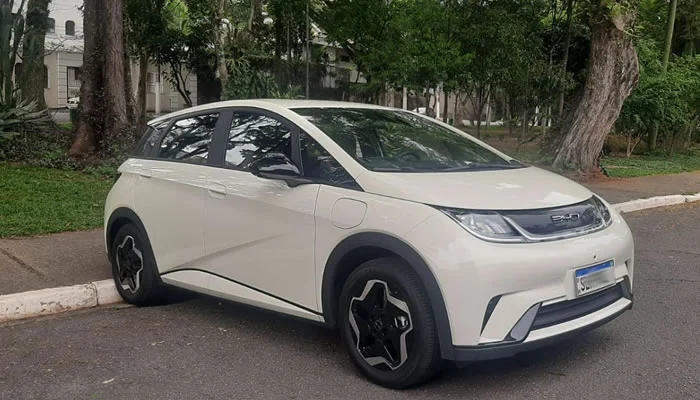In recent years, the electric vehicle (EV) industry has seen significant advancements, but none as groundbreaking as the introduction of BYD’s Blade Battery. This cutting-edge technology has not only set a new benchmark for safety but also enhanced the longevity of EV batteries, paving the way for a more sustainable future. As the world races towards clean energy solutions, understanding the impact of such innovations is crucial. In this article, we’ll explore how BYD’s Blade Battery is reshaping the landscape of EV safety and longevity, offering insights into its unique features and benefits.
The Breakthrough of BYD’s Blade Battery
Unmatched Safety Standards
The Blade Battery, developed by Chinese automaker BYD, has made headlines for its unparalleled safety features. Unlike traditional lithium-ion batteries, which are prone to thermal runaway—a dangerous situation where the battery overheats and can catch fire—the Blade Battery uses lithium iron phosphate (LFP) chemistry. This technology inherently resists overheating and is less likely to combust.
- Nail Penetration Test: In a widely publicized test, the Blade Battery demonstrated its resilience by enduring penetration by a nail without catching fire or exploding. This test is considered one of the most rigorous safety assessments in the battery industry.
- Temperature Resistance: During testing, the Blade Battery maintained a surface temperature between 30°C to 60°C post-penetration, significantly lower than the 200°C or more seen in traditional batteries.
Enhanced Longevity
EV owners are often concerned about battery degradation over time. The Blade Battery addresses this issue head-on with its impressive lifespan:
- Cycle Life: It boasts over 3,000 charge and discharge cycles, translating to nearly 1.2 million kilometers of driving distance without significant capacity loss.
- Durability: The use of LFP chemistry not only improves safety but also reduces the rate of capacity decay, ensuring that the battery retains its performance over a longer period.
Cost-Effectiveness
While safety and longevity are paramount, the Blade Battery also offers economic advantages:
- Lower Production Costs: The LFP chemistry is less expensive to produce compared to nickel-manganese-cobalt (NMC) batteries, making the Blade Battery a cost-effective option for automakers and consumers alike.
- Reduced Maintenance: The longer life span and enhanced safety reduce the need for frequent replacements and repairs, further driving down costs over the battery’s lifetime.
Practical Applications of the Blade Battery
Where to Buy and What to Compare
The Blade Battery is a key component in several BYD models, including the Han EV and Tang EV. These vehicles are available in select markets, with plans for expansion. When considering an EV equipped with the Blade Battery, compare:
- Range: While LFP batteries traditionally offer less energy density than NMC batteries, BYD’s advancements have minimized this gap, providing competitive range capabilities.
- Charging Infrastructure: Ensure your local area has adequate infrastructure to support fast charging, maximizing the benefits of the Blade Battery’s longer cycle life.
Charging Tips for Blade Battery EVs
To optimize the lifespan and performance of your Blade Battery:
- Avoid Overcharging: Keep the battery level between 20% and 80% to prevent unnecessary wear.
- Utilize Fast Charging Sparingly: While convenient, frequent use of fast charging can accelerate battery degradation.
- Regular Maintenance: Follow the manufacturer’s guidelines for regular check-ups to ensure battery health.
The Future of EVs with Blade Battery Technology
Trends and Predictions
As more automakers recognize the potential of LFP technology, the Blade Battery is likely to influence broader industry trends:
- Adoption by Other Brands: Companies like Tesla have already begun exploring LFP batteries for certain models, anticipating a shift towards safer and more durable battery options.
- Increased Market Share: With its cost-effectiveness and safety advantages, the Blade Battery could lead to wider EV adoption, especially in markets reluctant to transition due to safety concerns.
Potential Challenges
While the Blade Battery is a major step forward, challenges remain, such as:
- Energy Density: Continued innovation is needed to enhance the energy density of LFP batteries to compete directly with NMC counterparts in high-performance vehicles.
- Market Penetration: Expanding the availability of Blade Battery-equipped vehicles globally will require overcoming logistical and regulatory hurdles.
Conclusion: The Blade Battery’s Impact on the EV Landscape
BYD’s Blade Battery represents a significant leap forward in battery technology, offering unmatched safety and longevity. As the EV industry continues to evolve, innovations like the Blade Battery will play a crucial role in shaping a sustainable future. For consumers, this means not only safer and more reliable vehicles but also a more cost-effective path to embracing clean energy.
If you’re considering an electric vehicle, keep an eye on developments in Blade Battery technology—it may just be the game-changer you’ve been waiting for. What do you think about this new battery technology? Share your thoughts in the comments below and join the conversation on the future of sustainable mobility.

